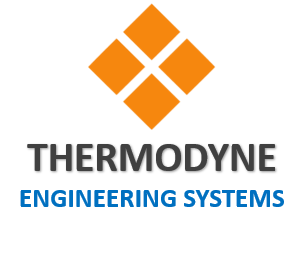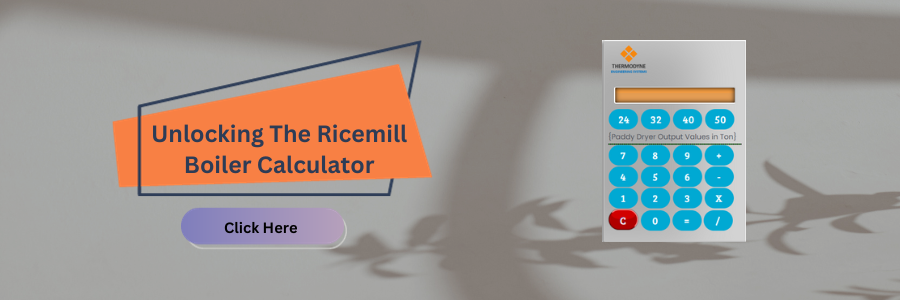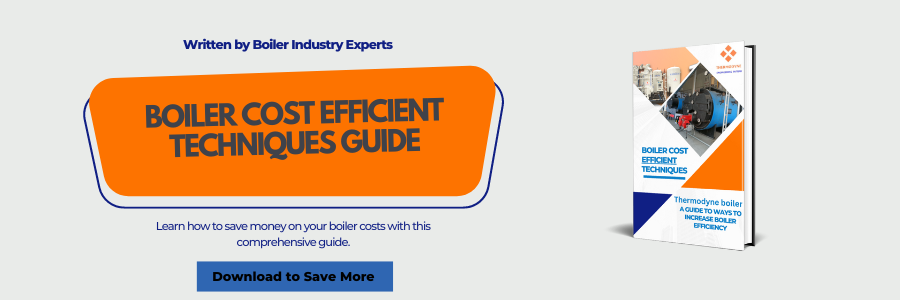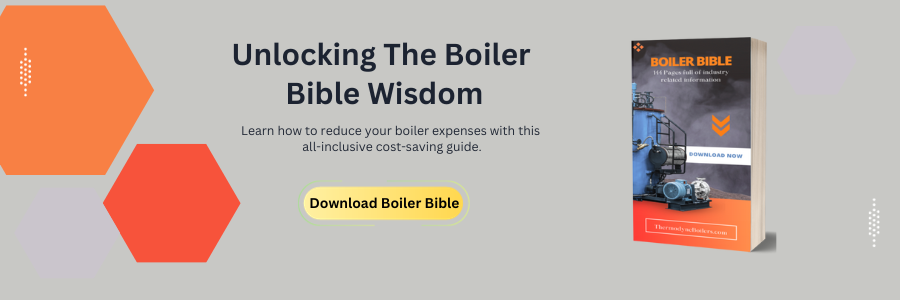Table of Contents
Blowdown in Boiler Definition
Blowdown in Boiler, Usually, water that is fed to the boiler contains high Total Dissolved Solids (TDS) content as well as other dissolved and undissolved solids in it. On heating water or converting water to steam, these dissolved solids do not evaporate and get separated from water or steam and settled at the bottom of the shell.
These undissolved solids are also responsible for the scaling, corrosion, and carryover of solids with the steam and other specific problems. This will further prevent the transfer of heat between the gases and the water and will eventually overheat the boiler tubes or shells.
Boiler in Blowdown Diagram
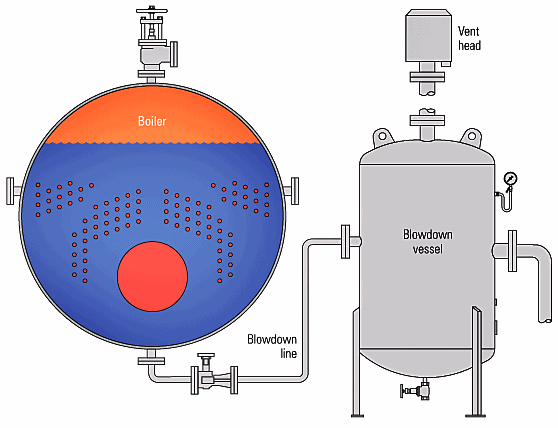
So some part of the water from the shell bottom is drained either intermittently or continuously to keep the TDS level of water under allowable operating limits. Therefore removing of TDS or impure water from the boiler shell is termed as blowdown.
Blowdown type in Steam Boilers
There are two ways of blowdown depending upon the type of design, a capacity of a boiler as well as the characteristics of a boiler feed water:-
- Intermittent or Manual blowdown – When a blowdown is done manually by the boiler operator without keeping at regular intervals is termed a Manual blowdown. This type of blowdown is useful to remove sludge formation or suspended solids from the boiler. In this blowdown valve is opened manually at regular intervals according to the set operating schedule. Although to reduce the heat losses in terms of hot blowdown water, the valve is opened frequently and slightly to allow only a small quantity of blowdown to occur but this kind of blowdown is responsible for high heat and pressure losses.
- Continuous blowdown – When blowdown is done continuously and automatically to keep the dissolved and suspended solids under boiler operating limits known as continuous blowdown. An automatic blowdown continuously monitors the quality of feed water as well as the quality of water inside a boiler shell and automatically opens as soon as the boiler water TDS exceeds the permissible operating limit. This type of blowdown helps remove a maximum amount of dissolved solids with only minimal loss of water and heat from the boiler. Also in continuous blowdown heat in terms of hot water from the boiler can be utilized to preheat the feed water by installing a heat exchanger or heat recovery equipment in the path.
Depending on the type of operation either manual or continuous and automatic, a blowdown valve is provided along with suitable accessories.
Pros:-
- Blowdown of water keeps the water TDS level under permissible limits.
- It prevents the corrosion and scaling of boiler tubes.
- It prevents the carryover of contaminants from the steam thereby providing pure steam.
Cons:-
- Blowdown of water increases the heat and pressure losses if not taken care of or proper scheduling is not done.
- Eventually, these heat and pressure losses reduce the boiler’s efficiency.
Also Read: High-Pressure Boiler
Calculating Boiler Blowdown Rate with the Essential Formula
Boilers blowdown is a crucial process that removes impurities and concentrated dissolved solids from boiler water to maintain optimal boiler performance and prevent corrosion and damage. The blowdown rate, the amount of water removed from the boiler per unit time, is a critical parameter that needs to be carefully calculated and controlled.
The essential formula for calculating boiler blowdown rate is:
BBR = SC * TDSW / (TDSM – TDSW)
where:
- BBR is the boiler blowdown rate (kg/h)
- SC is the steam consumption (kg/h)
- TDSW is the total dissolved solids in the feedwater (mg/L)
- TDSM is the maximum allowable total dissolved solids in the boiler water (mg/L)
Understanding the Formula
To understand how the formula works, let’s break it down:
- SC represents the amount of steam generated by the boiler, which directly influences the concentration of impurities in the boiler water. Higher steam generation leads to a higher concentration of impurities, requiring a higher blowdown rate.
- TDSW represents the initial concentration of impurities in the feedwater, the water that enters the boiler. Feedwater with higher TDSW contributes more impurities to the boiler, necessitating a higher blowdown rate.
- TDSM represents the maximum allowable concentration of impurities in the boiler water. This limit is set to prevent scaling, corrosion, and carryover (transfer of impurities into the steam). A lower TDSM requires a higher blowdown rate to maintain the desired impu
For example, if the steam consumption is 100 kg/h, the total dissolved solids in the water is 1,000 ppm, and the maximum allowable dissolved solids is 500 ppm, then the boiler blowdown rate would be:
bc is the maximum allowable Total Dissolved Solids – TDS – in the boiler water in ppm
Boiler Blowdown Calculation: Online Calculator
To Calculate Blowdown in the boiler you need to put data in the following Boiler Blowdown calculator online calculator:
Check out other Boiler Calculators created by Thermodyne technical team
Calculating the Boiler Blowdown Rate
To calculate the boiler blowdown rate, you’ll need to know the values of SC, TDSW, and TDSM. These values can be obtained from boiler operating data, water quality tests, and boiler design specifications.
Once you have the values, plug them into the formula and calculate the BBR. The BBR represents the amount of water that needs to be removed from the boiler per hour to maintain the desired TDSM.
Factors Affecting Boiler Blowdown Rate
Several factors can affect the boiler blowdown rate, including:
- Feedwater quality: Higher TDSW in the feedwater increases the blowdown rate.
- Steam consumption: Higher steam generation increases the blowdown rate.
- Boiler water chemistry: Maintaining proper boiler water chemistry can reduce the blowdown rate.
- Boiler type and operating conditions: Different boiler types and operating conditions may require different blowdown rates.
Optimising Boiler Blowdown
Optimising boiler blowdown is essential for efficient boiler operation. Excessive blowdown wastes water and energy, while insufficient blowdown can lead to boiler problems. Regular monitoring and adjustments to the blowdown rate are crucial to maintain optimal performance.
The boiler blowdown rate is a critical parameter for maintaining boiler efficiency and preventing damage. By understanding the formula and considering the factors that affect blowdown, operators can optimise the blowdown process and achieve optimal boiler performance.
Boiler Blowdown: A Crucial Process for Maintaining Boiler Efficiency and Safety
In the steam generation, boiler blowdown stands as an essential practice that safeguards boiler health and optimises its performance. This process involves the controlled removal of impurities and excess water from the boiler, ensuring that the boiler water remains within acceptable limits of dissolved solids and contaminants.
Types of Boiler Blowdown
Boiler blowdown encompasses two primary methods:
Continuous Blowdown: This approach involves the continuous discharge of a small quantity of boiler water, typically through a heat exchanger. The removed water is replaced with fresh feedwater, maintaining a steady balance of dissolved solids and preventing their concentration.
Manual Blowdown: At prescribed intervals, manual blowdown is initiated to expel accumulated sediments and impurities from the boiler. This process is often employed in conjunction with continuous blowdown to enhance the overall effectiveness of impurity removal.
Bottom Blowdown: For fire tube boilers, sediments tend to settle at the bottom, while in water tube boilers, they accumulate in the mud drum. Bottom blowdown specifically targets these deposits, preventing them from obstructing heat transfer surfaces and potentially causing boiler failures.
Surface Blowdown: Surface blowdown addresses suspended solids that gather on the surface of the boiler water. Its necessity is dictated by the quality of feedwater and the level of impurities present. Regular surface blowdown helps maintain water quality, minimise scaling, and prevent the carryover of impurities into the steam.
Benefits of Boiler Blowdown
The implementation of boiler blowdown imparts a range of advantages:
Optimising Dissolved Solids Levels: Blowdown effectively regulates the concentration of dissolved solids in the boiler water, ensuring it remains within acceptable limits.
Corrosion Prevention: By removing impurities that promote corrosion, blowdown safeguards the integrity of boiler components and extends their lifespan.
Scaling Reduction: Blowdown helps mitigate the formation of scale on boiler tubes and internal surfaces, preventing the buildup that hinders heat transfer and reduces boiler efficiency.
High-Quality Steam Generation: By minimising the carryover of impurities into the steam, blowdown contributes to the production of clean, high-quality steam.
Drawbacks of Boiler Blowdown
While indispensable for boiler maintenance, blowdown does present certain challenges:
Heat and Pressure Losses: During the blowdown process, a portion of heat and pressure is unavoidably discharged, potentially impacting boiler efficiency.
Improper Scheduling: Ineffective scheduling or neglecting blowdown can exacerbate heat and pressure losses, diminishing overall system performance.
Boiler blowdown stands as a critical practice for maintaining boiler efficiency and safety. By effectively removing impurities and excess water, blowdown ensures optimal boiler performance, prevents damage to boiler components, and contributes to the production of high-quality steam.
Read More- How to minimize the energy losses in blowdown.
Other Steam Boiler-Related Calculators
- Boiler Efficiency Calculator
- Steam Outlet Size Calculation
- Air quantity calculation for Combustion
- Flue gases quantity calculation for Combustion
- FD Fan Motor Power Calculator
- ID Fan Motor Power Calculator
- Chimney Draft Calculator
These Calculators are helpful for Mechanical Engineers Jobs and other people who interested
Boiler Blow Down in Boiler FAQ
Blowdown has several benefits, including:
It helps to prevent scale formation. Scale is a hard, mineral deposit that can build up on the inside of a boiler and reduce its efficiency.
It helps to prevent corrosion. Corrosion is the deterioration of metal due to chemical or electrochemical reactions. Blowdown can help to remove corrosive substances from the boiler water and prevent corrosion.
It helps to remove impurities. Impurities in the boiler water can cause problems such as foaming, carryover, and poor steam quality. Blowdown can help to remove these impurities and improve the quality of the steam.
Blowdown also has some risks, including:
It can reduce the boiler water level. If too much water is blown down, the boiler water level can drop too low and cause the boiler to overheat.
It can release contaminants into the environment. Blowdown water can contain contaminants such as heavy metals and other pollutants. These contaminants can be harmful to the environment if they are released into the air or water.
It can create a safety hazard. Blowdown water can be hot and can cause burns. It is important to take precautions to avoid getting burned when blowdown water is released.
The frequency of blowdown depends on the type of boiler, the operating conditions, and the quality of the feedwater. In general, blowdown should be done at least once a day. However, it may be necessary to blow down more often if the boiler is operating under harsh conditions or if the feedwater quality is poor.
There are a number of things that can be done to minimize the risks of blowdown, including:
Blow dWhat are the different types of blowdown?own only the amount of water that is necessary.
Release blowdown water to a safe location.
Take precautions to avoid getting burned by blowdown water.
Monitor the TDS level of the boiler water and blow down as needed to maintain the desired level.b
There are two main types of blowdown: continuous blowdown and intermittent blowdown.
Continuous blowdown is the process of continuously removing a small amount of water from the boiler. This is the most common type of blowdown.
Intermittent blowdown is the process of removing a larger amount of water from the boiler at regular intervals. This type of blowdown is typically used when the boiler water is very dirty or when the boiler is operating under harsh conditions.
Open blowdown is the process of releasing blowdown water directly to the atmosphere. Closed blowdown is the process of collecting blowdown water in a tank and then disposing of it properly.
Open blowdown is the most common type of blowdown. However, it can release contaminants into the environment. Closed blowdown is more expensive, but it helps to protect the environment.
There are two main methods of blowdown: manual blowdown and automatic blowdown.
Manual blowdown is the process of opening a valve and allowing water to flow out of the boiler until the desired TDS level is reached.
Automatic blowdown is the process of using a system that monitors the TDS level and automatically opens and closes the blowdown valve.
Automatic blowdown is more efficient and can help to prevent human error. However, it is more expensive to install and maintain.
There are a number of safety precautions that should be taken when performing a blowdown, including:
Wear protective clothing, such as gloves, goggles, and a hard hat.
Make sure that the blowdown valve is properly closed before starting the blowdown process.
Monitor the blowdown water temperature and make sure that it is not too hot.
Do not blow down the boiler if the water level is too low.
Release blowdown water to a safe location.
